Gizzy Electricteeth (aka Kelly Daly) is another Australian in SL that has been a very active participant in a range of areas. As training and technology lead for IBM Australia in SL, she’s busy enough. On top of that she’s played a training role for Aussie residents, recently commencing the Prim School series on ABC Island which shows residents how to create objects in SL.

We caught up with Gizzy this week to find out a little more:
Lowell: Tell us a little about yourself – where did you grow up, get educated etc?
Gizzy: I was born in Adelaide, and got dragged kicking and screaming to Ballarat when I was 5 (apparently that’s too young to move out of home – I asked!!). My formative years were all spent there, up to and including my Bachelor degree in computer science from the University of Ballarat. It was here that I also started working for IBM part time while in the final year of that degree. Once my degree was complete I moved to Melbourne (still working for IBM), and started my masters at RMIT part time. This took a LOT more years than intended as part way into it I was enlisted to give tutorials and labs, and then later to be a replacement lecturer for several subjects when the usual lecturer was unavailable. This all culminated in lecturing my own web subject, emergency lecturing some database subjects, and continuing working giving labs and tutorials in most of the subjects which I had already completed. The result was my Masters took about 4 years longer than intended =)
I am owned by three completely loony cats – the youngest of which is named Linden (thanks to my fiance!!).
Lowell: Where have you worked prior to IBM?
Gizzy: I have been ten years now with IBM – prior to that were the usual round of part time uni jobs at random computer shops, pizza shops, etc 😉 And the RMIT thing (more “while at” than “prior to” =) )
Lowell: Can you describe for us your current role at IBM?
Gizzy: My role at the moment is training and tech lead in Second Life building projects, also research and rapid prototyping for potential SL projects. My role about a month ago was as a Linux Kernel developer.
Lowell: What are IBM’s objectives for their presence in SL? And where does the IBM Australian Development lab fit in?
Gizzy: We are researching and learning as much as we can on virtual worlds. I say virtual worlds here as we are not focussed solely on Second Life, but over a large range of products. IBM’s aim is to assist in making virtual worlds ready for general consumption for both business and home.
Earlier in the year, IBM’s CEO, Sam Palmisano, announced $100 million USD to be spent on research into ten key focus areas which were chosen through an “Innovation Jam”. Employees, family members and friends were all asked to submit ideas on how they think IBM could improve areas such as environment, work and life balance and health, technology, etc… Virtual worlds was one of the top areas of interest shown through this, and therefore was a part of this funding announcement. In fact, Sam made this announcement in the forbidden city, Beijing in real life AND Second Life simultaneously =)
The Australia Development Lab fits into this by being the Australian arm of the emerging business organisation created around virtual worlds as a result of Sam’s funding. We currently have a team of two people working full time in this area (myself included), and a whole host of others who volunteer their time to increase their knowledge in this arena (and to have fun – because they love it!)
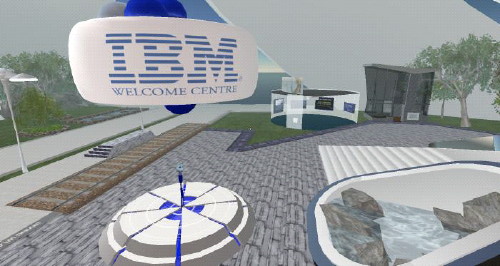
Lowell: Can you tell us about some of the projects you’ve been involved in, including the Australian Open project?
Gizzy: I have been involved mostly in internal build projects such as IBM PartnerWorld, ADL, several client demos and a little with the Sears and Circuit City builds. And, of course, the Australian Open.
The Australian Open was the first large customer build that I have been involved with. We had a three person development team (myself on building, my Australian colleague on scripting, and a US based colleague on graphics – displaying the collaborative nature of working within Second Life 😉 ). Each of us assisted with all areas of the build, although for the majority of this project we kept to our defined roles, and that really seems to work well on larger scale projects. We had a live feed of ball positioning data coming from the IBM technical team onsite, which we could then manipulate into SecondLife coordinates and recreate the game on the tennis court in our island just a few seconds behind reality. Using this data we were able to determine where a player would need to be standing to hit the ball, and move a pose ball to this location so that we could have an avatar sitting on the pose ball and look to be playing the game of tennis. This provided people with a view of the ball coming at them as if they were the played on the court. Ever wanted to be Federer? We also had live data of all match information – scores from past and present matches on all courts throughout Melbourne Park, scheduling information, etc. These were able to be seen at all times on various score boards and match update centres throughout the island, and also via a heads up display that could be used from anywhere within SecondLife. The build itself took a great deal of detail from the real Rod Laver Arena and the surrounding grounds, right down to a virtual recreation of the tennis ball shaped Garden Square at the back of the arena. All of this build was based on photographs.
There is a YouTube demo of the Australian Open build here.
IBM as a whole has been involved in MANY more projects, and we have people from all over the world working on both internal (IBM) and external (customer) projects.
Lowell: What specifically about SL limits you achieving what you’d like to in projects?
Gizzy: I am VERY MUCH looking forward to learning how to use sculpted prims in Second Life =) And some better scripting!
Lowell: Have you had any involvement with other virtual worlds and if so which one/s?
Gizzy: Personally, I have not looked much further than Eve Online or World of Warcraft. I spend so much time inside of Second Life that I no longer seem to have a first! =)
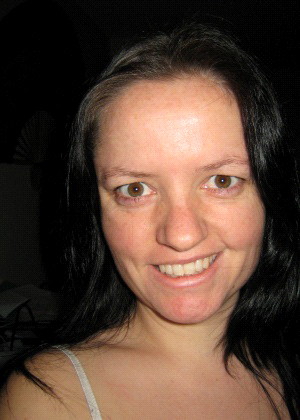
Lowell: What excites you most about your work in SL?
Gizzy: At the moment the same thing that excited me about teaching at RMIT – seeing people grow and learn as a result of information that I can share with them =)
It is also exciting working with new technologies before they become mainline, working out what can or cannot be done with these technologies. It is a lot of fun =)
Lowell: Any predictons you’d like to make about SL development over the next year?
Gizzy: Not necessarily a prediction so much as a hope… Linden Labs have open sourced the client and there are rumours of the server to follow. With my Linux and Open Source/Open Standards background, I would truly love to see this come to light.
Lowell: Three favourite places you keep coming back to in SL?
Gizzy: DE Designs (my avatar is ALWAYS dressed in stuff from here!!)
The build of the Yankee Stadium by the Electric Sheep Company was very much an inspiration when we decided to do the Australian Open:
I don’t know that there is another single build that I keep returning to more than any other (apart from my own current projects through necessity ;)…
I love to look around at other pretty builds – places where the architects have ignored real world constraints and built for what works within SecondLife… Such as Text100 Island, ABN AMRO and almost any build by Dalian Hansen (he is TRULY an inspiration), Electric Sheep or Aimee Weber.
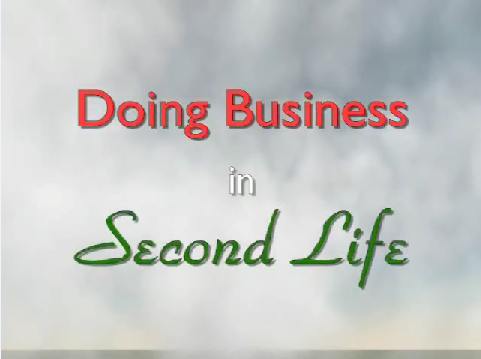
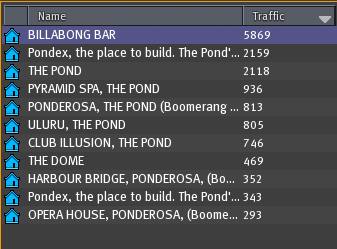
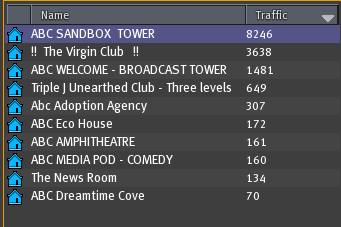
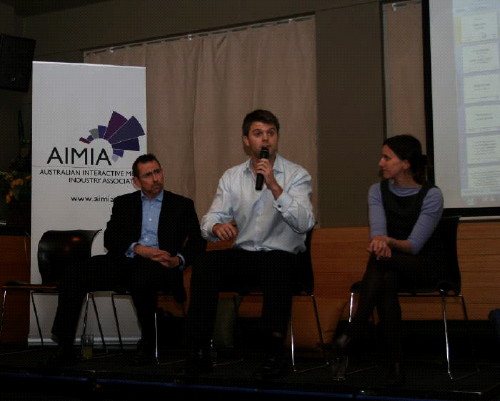
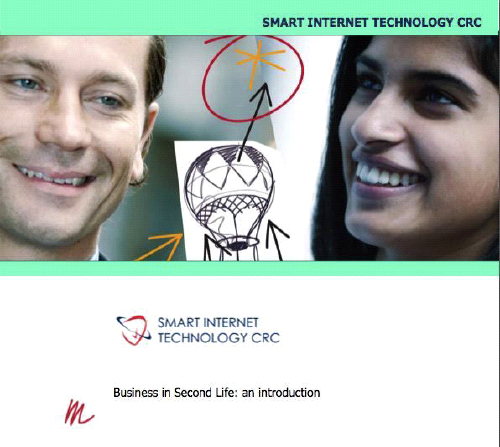

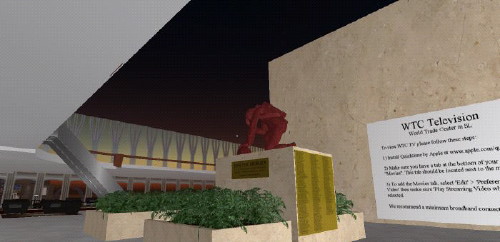
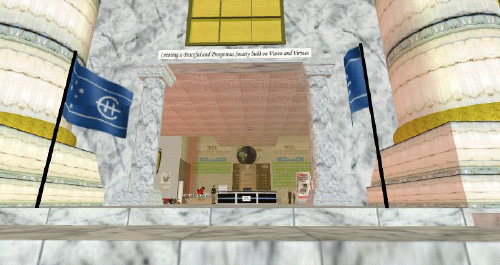
Recent Comments